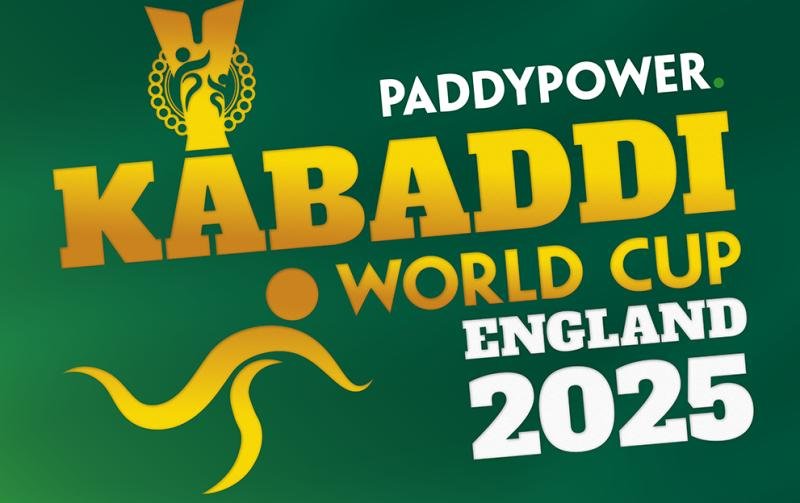Kabaddi World Cup 2025
Kabaddi, a dynamic sport that blends strength, strategy, and agility, has captured the imagination of sports fans worldwide. Born in India, this high-energy contact sport has grown into a global phenomenon, with the Kabaddi World Cup becoming one of its most eagerly awaited events.
The 2025 edition promises to be an unforgettable competition, featuring teams from across the globe vying for dominance on the world stage.
The Growth of Kabaddi as a Global Sport
Kabaddi, with its roots deeply embedded in ancient India, has made remarkable strides in recent years, transforming into a globally recognized sport. Its unique combination of wrestling and tag elements has garnered attention far beyond South Asia, spreading to countries across the world.
The rise of the Pro Kabaddi League (PKL) in India has played a pivotal role in bringing the sport to a wider audience, demonstrating that Kabaddi is far more than just a regional pastime.
Thanks to the efforts of the International Kabaddi Federation (IKF), the sport’s reach has expanded internationally. Since its inception in 2004, the Kabaddi World Cup has continued to grow in significance, becoming one of the major events for Kabaddi fans around the world.
Over the years, nations such as India, Pakistan, Iran, South Korea, and Canada have participated, with Kabaddi steadily establishing itself as a part of the global sporting landscape.
What’s in Store for Kabaddi World Cup 2025
The 2025 Kabaddi World Cup is set to take the sport to new heights. With an increased number of teams participating and the competition expected to be fiercer than ever, this edition will showcase some of the world’s finest Kabaddi players. The tournament is bound to feature intense, fast-paced action and strategic play, as teams battle for the ultimate prize.
Tournament Format and Teams
The 2025 Kabaddi World Cup will likely feature a round-robin stage followed by knockout rounds, with both men’s and women’s tournaments taking place at the same time. Over 20 nations are expected to take part, and there will be a concerted effort to strengthen the global presence of countries with a growing Kabaddi culture.
In the men’s tournament, traditional heavyweights such as India, Pakistan, and Iran are expected to dominate the field. India, with its history of multiple World Cup victories, will be a formidable contender. Pakistan, known for its resilience, will look to avenge its past defeats, while Iran’s rising Kabaddi stars will challenge the established powers.
On the women’s side, the competition will be just as fierce. India has long been the dominant force in women’s Kabaddi, but nations like Iran and Thailand are quickly catching up. The 2025 World Cup promises to feature the most competitive women’s tournament yet.
The Venue
The Kabaddi World Cup 2025 will be held in a state-of-the-art venue, designed to handle the electrifying atmosphere of this high-energy sport. Previous World Cups have been hosted in world-class stadiums such as the Guru Nanak Stadium in Ludhiana and the Sardar Vallabhbhai Patel Indoor Stadium in Ahmedabad.
For Kabaddi World Cup 2025, fans can expect a truly grand spectacle, with cutting-edge infrastructure, enhanced broadcast capabilities, and a memorable fan experience that will bring the sport to a global audience.
Teams to Watch
India:
India has long dominated Kabaddi, and its team is always a force to be reckoned with. With legendary players like Pardeep Narwal and Ajay Thakur leading the way, the team’s deep Kabaddi culture and immense talent pool will give them a significant advantage in the Kabaddi World Cup 2025.
Pakistan:
As India’s traditional rival, Pakistan will be looking to bounce back from past disappointments. The team’s star players, such as Amir Shahzad and Nadeem Sargana, will be critical to their chances of challenging for the title.
Iran:
Known for their disciplined and strategic approach, Iran’s Kabaddi team has steadily grown in strength. With a new generation of talented players, Iran has the potential to disrupt the dominance of South Asian teams.
South Korea:
South Korea’s Kabaddi team has been making strides, and their tactical, fast-paced play has earned them respect on the world stage. Their combination of speed and intelligence will make them a team to watch closely as the tournament approaches.
Canada:
Canada’s Kabaddi scene has steadily developed, particularly due to the country’s large South Asian diaspora. With a blend of seasoned players and emerging talent, Canada could cause an upset and make a deep run in the tournament.
Emerging Nations
While India, Pakistan, and Iran have traditionally ruled the sport, the Kabaddi World Cup 2025 will feature a growing number of emerging nations, including Kenya, the United States, and various European countries. These teams, though still building their Kabaddi infrastructure, are making impressive strides and could prove to be formidable contenders on the global stage.
The Impact of Kabaddi World Cup 2025
The Kabaddi World Cup 2025 will not only bring Kabaddi into the spotlight but also have a lasting impact on the sport’s global growth. One of the key outcomes of the event will be the expansion of Kabaddi’s international appeal. Through global partnerships, the development of talent, and the creation of professional leagues, the World Cup will help solidify Kabaddi’s place as a mainstream sport worldwide.
Expanding Kabaddi’s Global Reach
The 2025 World Cup will expose Kabaddi to new audiences across different continents. As the sport grows in countries like the United States, the UK, and Australia, the World Cup will serve as a powerful platform to showcase Kabaddi’s unique blend of athleticism, strategy, and raw emotion.
The speed, endurance, and excitement of the sport will draw in new fans eager to experience the thrill of Kabaddi.
Boosting Sponsorship and Investment
With the sport’s popularity on the rise, the 2025 Kabaddi World Cup is expected to attract increased sponsorship and investment. Major brands will look to capitalize on Kabaddi’s expanding fanbase, which could result in more resources for improving the sport’s infrastructure, higher prize money, and greater opportunities for young athletes to pursue Kabaddi professionally.
Cultural Significance
Kabaddi is more than just a sport—it’s a representation of culture and tradition for many countries. The 2025 World Cup will be a celebration of this cultural richness, bringing together diverse nations and communities to honor the universal love for Kabaddi.
It will offer fans a chance to connect with the heritage and history behind the sport while watching world-class competition unfold.
Conclusion
The Kabaddi World Cup 2025 is poised to be a thrilling and historic event, where the world’s top Kabaddi players will compete for glory. With heightened competition, expanded international participation, and a growing fanbase, this edition will push the limits of what’s possible in the sport.
Fans can expect a spectacle full of excitement, skill, and passion, as Kabaddi continues to write its story on the global sports stage.

